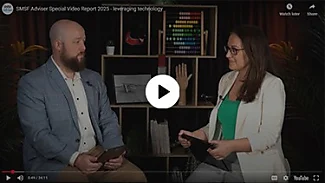ATO reveals most common contraventions for SMSFs
Loans, in-house assets and separation of assets continue to be the most commonly reported contraventions for SMSFs, according to an ATO specialist.
In the most recent SMSF Adviser podcast, Martin Frauenfelder, director of the ATO SMSF regulatory branch, said overall contravention rate for SMSF is still less than 4 per cent, but unfortunately half of those are rectified.
“We are, however, starting to see this improve, but clearly, there’s a lot more work to do,” he said.
“A contravention isn’t necessarily a bad thing, where an auditor picks up an issue, the trustees are made aware and have an opportunity to rectify it. And we encourage trustees to work with their professionals to rectify these as soon as possible.”
Mr Frauenfelder said the ATO is now beginning the process of analysing the most recent statistics in regard to SMSF which it hopes will give it a better understanding of the SMSF sector and the best ways in which the ATO can offer support.
“Our preliminary analysis shows around 45 per cent of funds are linked to small business, 30 per cent to individuals not in business, and the remaining 25 per cent linked to private wealth groups.”
“The analysis is ongoing, but we can already see differences in the compliance behaviours for these segments. For instance, we have found higher rates of non-lodgement and loans to related parties for those funds with members operating a small business.
“There also appears to be a higher proportion of individuals entering the system for the purpose of illegally accessing their super as this group tends to be targeted by promoters. “Also, inappropriate tax planning arrangements involving SMSFs are more common where fund members are part of a private equity group.”
Mr Frauenfelder said the data is revealing that there is a growing trend for younger people involved in SMSF and in the past five years the average age of new members has dropped from around 48 years to 46.5 years and around 64 per cent of new members are now under the age of 50.
“Within this group, we saw a lot of activity in the 35 to 44 years age group. These individuals made up 34 per cent of all new members, which is up from around 29 per cent five years ago,” he said.
“Collectively, those 60 or over only made up around 10 per cent of new registrations, which has been pretty steady for the last few years.”
And with the influx of younger members into SMSFs, Mr Frauenfelder said it is important that they get advice, especially around whether an SMSF is the right retirement vehicle for their needs.
“This is regardless of whether they’re coming into the sector or whether they’re existing,” he said.
“Ideally, this is discussed when the SMSF is being set up and reviewed as circumstances change throughout the lifetime of the fund particularly as trustees become older, it’s extremely important this is talked about, so an appropriate exit plan is put in place. “Unfortunately, we see a lot of cases where one member of a two-member fund has passed away and they were the active member of the fund so the remaining member who has never really had much to do with the fund gets left to make all the decisions.”
Mr Frauenfelder said advice is not just about planning for the death of a member but also the day-to-day running of a fund.
“There are a number of reasons why an SMSF may no longer be right for the individual and you never know when the unexpected may occur, therefore, it’s never too early to have a conversation and to be prepared,” he said.
“Another key messages is to remind members they can’t take money out of the fund for personal use before they meet a condition of release.
“In most instances, this is when you reach your preservation age of 60 and retire, or 65 even if you don’t retire. And there are some other conditions that qualify.
“It is illegal to access your super before you make one of these conditions and you can face significant penalties including paying additional income tax returns on the amounts that are illegally accessed.
“Again, it doesn’t matter if you’re younger or older. You need to have a development and review of a strategy which should consider issues such as diversification or lack of investment returns and how the investments will achieve the member’s return expectations.
“Particularly as members get close to retirement, they need to consider things like the liquidity of the fund’s assets, the fund’s ability to pay benefits and other costs, and whether the funds should hold insurance for each member.”
Mr Frauenfelder said although the ATO does not collect data on whether new members talk to an adviser before establishing an SMSF, it does know that 85 per cent of funds are set up through a registered agent, up from around 75 per cent in 2018.
Additionally, around 85 per cent of those funds also have a corporate trustee, which has been slowly climbing over the last few years.
“That suggests that the majority of new SMSFs are talking to a tax professionals before they set up,” he said.
“We know that SMSF is a strong, and robust sector. There’s just over 600,000 funds now and it’s the second largest superannuation fund type by value behind industry funds.”













